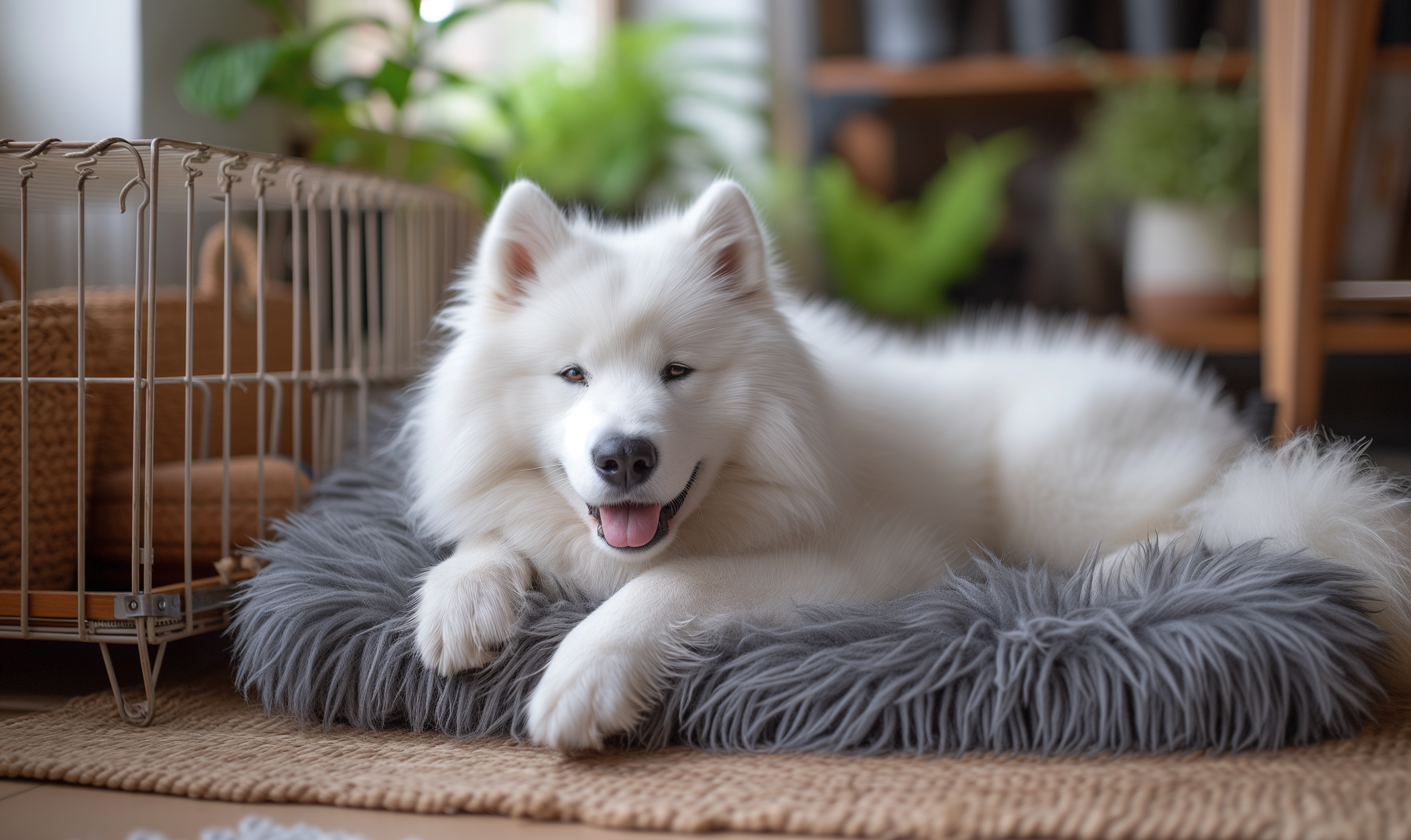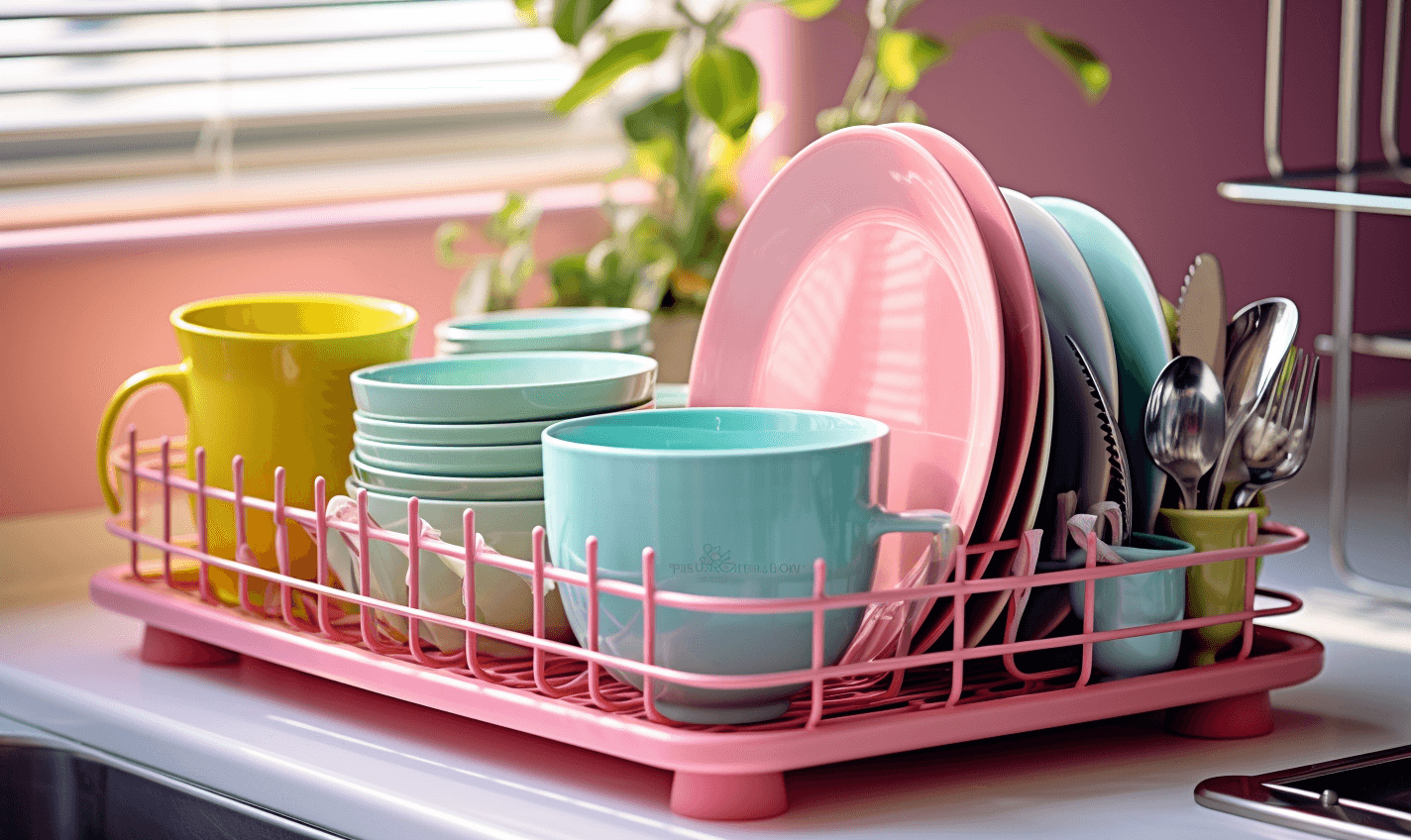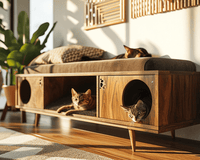Introduction:
Welcome to our comprehensive guide on collapsing dog crates – a must-read for pet owners seeking convenience and ease of travel. As devoted caregivers to our furry friends, we understand the significance of a collapsible dog crate in enhancing your pet's comfort and your overall experience. Whether you're planning a weekend getaway or need a space-saving solution at home, collapsible crates offer unparalleled versatility. In this guide, we'll delve into the various types of crates, step-by-step collapsing techniques, and provide essential tips to ensure your pet's safety and well-being. Let's embark on this journey to make life with your canine companion even more enjoyable!

1. Understanding Your Dog Crate
Selecting the right dog crate is a crucial decision for pet owners, and understanding the various types and components can significantly impact your furry friend's comfort and your convenience. Let's delve deeper into the types of dog crates, their key components, and the benefits of opting for collapsible crate
a. Types of Dog Crates:
- Wire Crates: Versatile and Durable
Wire crates are a popular choice due to their versatility and durability. Constructed with a metal frame and wire mesh, these crates offer excellent ventilation, making them suitable for various climates. The open design allows pets to see their surroundings, promoting a sense of security. Wire crates are often chosen for training purposes, thanks to their visibility and ease of folding.
- Plastic Crates: Secure and Suitable for Travel
Plastic crates, also known as travel crates, are designed with security and comfort in mind. Typically made of sturdy plastic, these crates provide a more enclosed and den-like space for your pet. Many airline companies approve plastic crates for travel, ensuring your pet's safety during flights. The enclosed design minimizes external stimuli, making these crates a great choice for anxious pets.
- Soft-Sided Crates: Comfortable and Portable
Soft-sided crates are perfect for pet owners prioritizing portability and comfort. Made with lightweight materials like nylon or canvas, these crates are collapsible and easy to transport. Soft-sided crates are ideal for trips, camping, or any situation where a compact, temporary shelter is needed. They provide a cozy environment, making them suitable for well-behaved, calmer dogs.
b. Key Components:
Frame:
The frame forms the structure of the crate and can be made from various materials, such as metal for wire crates or sturdy plastic for other types. The frame's quality determines the overall durability and stability of the crate.
Door(s):
Doors provide access to the crate for both you and your pet. The design and locking mechanism of doors vary between crate types, influencing ease of use and security.
Latches:
Latches secure the crate, ensuring that it remains intact and your pet stays safely contained. Understanding the type of latches on your crate is essential for proper use.
Tray:
The tray sits at the bottom of the crate, catching any spills or accidents. Removable trays, especially in wire crates, simplify cleaning and maintenance.
c. Benefits of Collapsible Crates:
- Portability:
Collapsible crates are designed with convenience in mind. The ability to fold the crate makes it easy to transport, whether you're heading on a road trip, visiting friends, or simply need to move the crate around the house.
- Storage:
Collapsible crates are space-saving wonders. When not in use, these crates can be folded and stored compactly, minimizing the impact on your living space.
- Travel-Friendliness:
For pet owners who love to travel, collapsible crates are a game-changer. Many of these crates meet airline regulations, allowing you to provide a familiar space for your pet during flights.
In conclusion, understanding the types of dog crates, their key components, and the benefits of collapsible crates empowers pet owners to make informed decisions. Whether you prioritize durability, travel-friendliness, or comfort, there's a crate type that suits both you and your beloved canine companion.

2. Step-by-Step Guide to Collapse a Dog Crate
Mastering the art of collapsing a dog crate is an essential skill for pet owners who value convenience and portability. In this step-by-step guide, we'll walk you through the process of collapsing your dog crate with precision and ease.
a. Preparation:
Clearing the Crate:
Begin by removing any items or bedding from inside the crate. Ensuring the crate is empty not only makes the collapsing process smoother but also prevents any items from getting caught or damaged during folding.
Finding Adequate Space:
Identify a spacious area where you can safely and comfortably collapse the crate. Having ample space allows you to navigate around the crate without obstacles, reducing the risk of accidents or frustration.
b. Unlocking Mechanisms:
Understanding Latches:
Examine the crate for any latches securing the frame. Latches are often positioned on the sides or top of the crate and are crucial for maintaining its structural integrity. Depending on the crate type, latches may include simple slide mechanisms or more complex locking systems.
Identifying Release Buttons:
Some crates come equipped with release buttons or levers that need to be pressed or manipulated to unlock the crate's components. These buttons are usually strategically placed near the latches and serve as a quick-release mechanism.
c. Folding Techniques:
Collapsing the Frame:
Begin collapsing the crate by unlocking and folding the frame. For wire crates, this often involves collapsing each side panel towards the center. Follow the manufacturer's guidelines for the specific crate you own, as different models may have distinct folding mechanisms.
Folding the Sides:
Once the frame is collapsed, focus on folding the sides of the crate. This step may vary depending on the crate type. For plastic crates, collapsing the sides often involves releasing side latches. Soft-sided crates usually have zippers to facilitate this process.
Flattening the Crate:
After collapsing the frame and sides, work towards flattening the crate completely. Ensure all components are neatly folded, and the crate sits flat on the ground. This step is crucial for storage and transportation, as a properly flattened crate maximizes space efficiency.
Collapsing a dog crate is an art that requires patience and attention to detail. Following these step-by-step instructions ensures a smooth and stress-free process, benefiting both you and your furry friend.
Remember, it's essential to refer to your specific crate's manual or guidelines provided by the manufacturer for precise instructions tailored to your crate's design. Now that you've mastered the technique, enjoy the convenience and flexibility that a collapsible dog crate brings to your pet ownership journey.

3. Tips for Collapsing Different Types of Dog Crates
Collapsing different types of dog crates requires a nuanced approach, as each type comes with its unique features and mechanisms. In this section, we'll explore valuable tips for collapsing wire crates, plastic crates, and soft-sided crates to ensure a smooth and stress-free experience.
a. Wire Crates:
Managing Foldable Panels:
Wire crates often consist of foldable panels that make collapsing convenient. When managing foldable panels, start by unlocking any latches securing them in place. Gently fold each panel towards the center, following the crate's natural folding pattern. Take care not to force the panels, as this may damage the crate's structural integrity.
Securing Hinged Doors:
Many wire crates have hinged doors that need to be secured properly during the collapsing process. Ensure that any latches or locking mechanisms on the doors are released before attempting to collapse the crate. This step prevents any resistance during folding and maintains the overall stability of the crate.
b. Plastic Crates:
Releasing Side Latches:
Plastic crates often feature side latches that secure the top and bottom halves of the crate. To collapse a plastic crate, locate and release these side latches carefully. Applying gentle pressure to these latches while lifting the top half of the crate allows for a smooth collapse. Pay attention to any additional locking mechanisms to avoid unnecessary complications.
Handling Ventilation Slots:
Plastic crates are designed with ventilation slots to ensure proper airflow for your pet. When collapsing the crate, be mindful of these slots. Avoid covering or obstructing them to maintain a comfortable and well-ventilated environment for your furry friend.
c. Soft-Sided Crates:
Zipper Techniques:
Soft-sided crates typically use zippers as a primary closure mechanism. Before collapsing, ensure that all zippers are fully opened to release tension in the fabric. Gently unzip each closure, paying attention to any corners or seams that might snag. Taking your time with zippers minimizes the risk of damage and ensures the longevity of your soft-sided crate.
Folding Fabric Walls:
Soft-sided crates are known for their flexibility, making them convenient for travel. When collapsing a soft-sided crate, start by folding the fabric walls inward. Depending on the design, you may need to follow a specific folding pattern provided by the manufacturer. Taking care not to force the fabric prevents unnecessary wear and tear.
In summary, understanding the nuances of collapsing different types of dog crates allows for a more efficient and safe process. Always refer to the manufacturer's guidelines for specific instructions tailored to your crate's design. By following these tips, you'll ensure that your collapsible dog crate remains in optimal condition, providing a comfortable and secure space for your beloved pet.

4. Maintenance and Safety Measures
Ensuring the maintenance and safety of your dog crate is vital for both the longevity of the crate and the well-being of your furry companion. In this section, we'll explore comprehensive tips for maintaining your dog crate and implementing safety measures.
a. Cleaning the Crate:
Removing Stains and Odors:
Regular cleaning is essential to maintain a hygienic and comfortable environment for your pet. Begin by removing any bedding or items from the crate. For wire and plastic crates, use a mild pet-friendly cleaner to wipe down surfaces, paying attention to corners and seams where stains and odors may linger. A mixture of water and pet-safe detergent can effectively eliminate stains.
Washing Fabric Components:
For soft-sided crates with fabric components, check the manufacturer's guidelines for cleaning instructions. Most soft-sided crates have removable and machine-washable fabric components. Wash these components using a gentle cycle and pet-safe detergent to keep them clean and odor-free. Air-drying is recommended to prevent fabric shrinkage.
b. Checking for Wear and Tear:
Inspecting Hinges and Latches:
Regularly inspect the hinges and latches of your dog crate to ensure they are in good working condition. Look for any signs of rust, bending, or misalignment. Lubricate hinges and moving parts as recommended by the manufacturer to prevent stiffness and maintain smooth operation.
Reinforcing Weak Points:
Identify any weak points or areas showing signs of wear, especially in wire and plastic crates. Reinforce weak spots with appropriate materials or consider seeking replacements for damaged parts. Addressing wear and tear promptly can prevent further damage and maintain the structural integrity of the crate.
c. Safety Guidelines:
Ensuring Proper Locking:
Before placing your pet in the crate, ensure all locking mechanisms are engaged securely. Double-check latches, zippers, or any other closure systems to prevent accidental escapes. Proper locking not only keeps your pet safely contained but also contributes to their sense of security.
Monitoring Pet Behavior:
While in the crate, monitor your pet's behavior for any signs of distress or discomfort. Some pets may become anxious or attempt to chew on the crate, potentially causing damage. If your pet exhibits destructive behavior, consider providing additional toys or using deterrent sprays to discourage chewing.
Incorporating these maintenance and safety measures into your routine ensures that your dog crate remains a safe and comfortable space for your pet. Regular inspection, cleaning, and addressing wear and tear promptly contribute to the overall well-being of your furry friend and extend the life of your crate. Remember, a well-maintained crate is a happy and secure haven for your beloved pet.

5. Troubleshooting Common Issues
Encountering common issues with your dog crate can be frustrating, but with the right troubleshooting techniques, you can address them effectively. In this section, we'll explore solutions for stuck latches, a bent frame or panels, and torn fabric in soft-sided crates.
a. Stuck Latches:
Lubrication Tips:
Stuck latches are a common issue, especially in crates that have not been used for some time. Apply a pet-safe lubricant, such as silicone or mineral oil, to the latch mechanism. This helps reduce friction and allows the latch to move more freely. After applying the lubricant, work the latch back and forth to distribute the lubrication evenly.
Gentle Maneuvering:
If lubrication alone doesn't solve the issue, try gently maneuvering the latch with your hands or a pair of pliers. Be cautious not to use excessive force, as this may cause further damage. Applying gentle pressure while wiggling the latch can help release it from its stuck position.
b. Bent Frame or Panels:
Straightening Techniques:
A bent frame or panels can compromise the structural integrity of the crate. For wire crates, use pliers or a wrench to carefully straighten any bent wires. Plastic crates may require gentle manipulation to realign panels. Take your time and make gradual adjustments to avoid causing additional damage.
Reinforcement Options:
If the frame or panels continue to bend despite attempts at straightening, consider reinforcing the weakened areas. Use additional materials such as zip ties or clips to secure and strengthen the compromised sections. Reinforcement helps prevent further bending and maintains the overall stability of the crate.
c. Torn Fabric in Soft-Sided Crates:
Patching and Sewing:
Soft-sided crates are susceptible to tears, especially if your pet is prone to scratching or chewing. For small tears, consider using fabric patches or iron-on patches designed for repair. Apply the patch to the torn area following the manufacturer's instructions. Additionally, sewing the torn fabric with a strong, pet-friendly thread can help reinforce the damaged section.
Replacement Considerations:
If the fabric damage is extensive or the structure of the soft-sided crate is compromised, replacement might be the most viable option. Many manufacturers offer replacement parts or even entire fabric components for their crates. Ensure that any replacement parts are compatible with your specific crate model.
In conclusion, troubleshooting common issues with your dog crate involves a combination of practical techniques and gentle care. Remember to consult the manufacturer's guidelines for specific recommendations tailored to your crate's design. By addressing issues promptly and employing these troubleshooting tips, you'll maintain the functionality and durability of your dog crate, providing a secure and comfortable space for your pet.

Conclusion:
In summary, collapsible dog crates offer unparalleled convenience for pet owners, making travel, storage, and daily routines seamless. Understanding the types, components, and proper collapsing techniques is essential. Regular maintenance and troubleshooting ensure the longevity of the crate. By embracing these practices, pet owners create a comfortable and secure haven for their furry friends. I encourage all pet owners to harness the benefits of collapsible dog crates, providing not just a portable space but a sanctuary where their pets feel safe and content. Prioritizing your pet's well-being has never been more accessible with the versatility of collapsible crates.

FAQs:
- Q: Can I collapse any type of dog crate?
A: Most crates are collapsible, but the techniques may vary. Refer to the manufacturer's guidelines for specific instructions.
- Q: Are collapsible crates safe for my dog?
A: Yes, when used appropriately. Ensure the crate is in good condition, and always monitor your pet's behavior.
- Q: How often should I clean my dog's crate?
A: Regular cleaning is essential. Aim for at least once a week, but adjust based on your dog's habits and any accidents.
- Q: Can I use a collapsed crate for air travel?
A: Check with the airline first. Some collapsible crates meet travel regulations, but confirm specific requirements.
- Q: My crate won't collapse. What should I do?
A: Refer to the troubleshooting section in the guide. If issues persist, contact the manufacturer for assistance.













